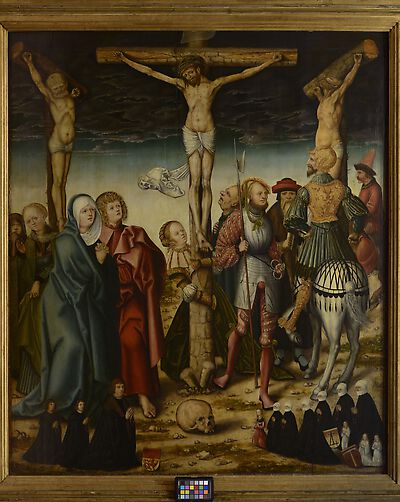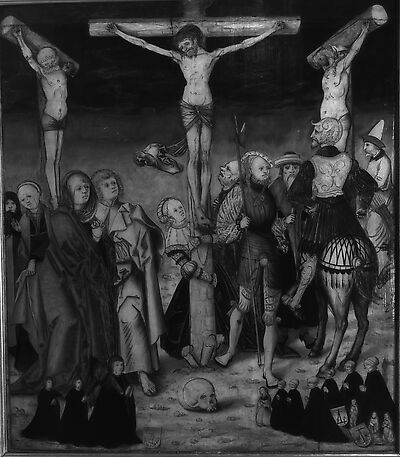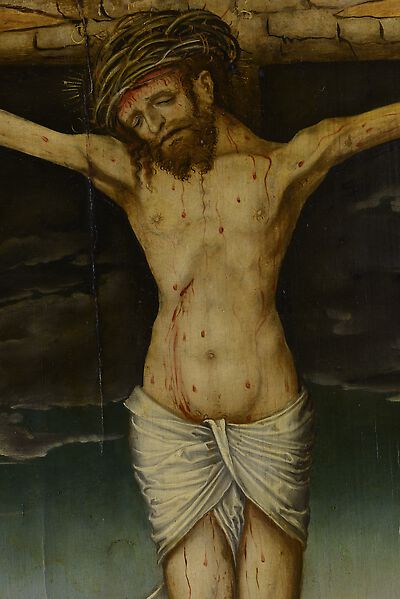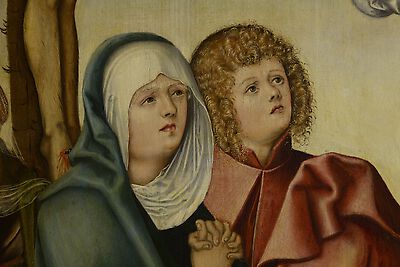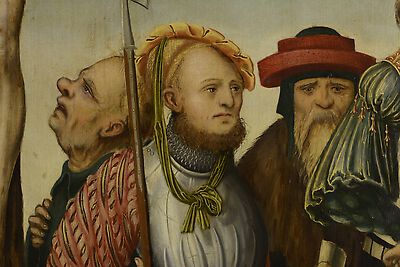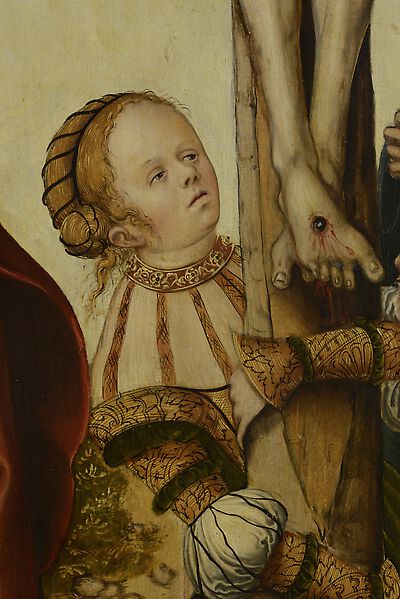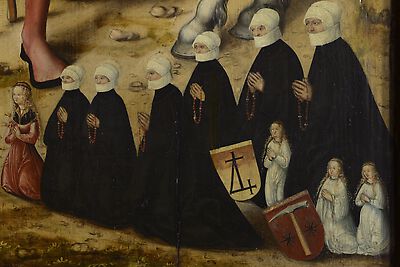Two of the three coats-of-arms shown can be indentified: the coat-of-arms positioned in front of the men on the left belongs to the Preusser family, while that on the far right can be associated with the Thümmel family. Both were old established Leipzig families who owned extensive properties and were very well connected. In the 16th century numerous offsprings from both familes became council members, academics and other influential personalities. For example the Preusser family owned the property Markt 11 next to a guesthouse in Petersstraße, which was one of the largest plots in Leipzig.
The painting could be the one referred to in an entry written by Salomon Stepner (No. 649), describing a crucifixion originally located in the Thomaskirche. The presence of the Preusser coat-of-arms suggests that this painting may indeed be the epitaph for Hans Preusser (d. 1549). Consequently the epitaph would be dated shortly after 1549. There are no other entries by Stepner, which could be associated with the epitaph.
However, in addition to the above mentioned dependence on earlier depictions of the Crucifixion, further evidence counters this interpretation: in Leipzig by 1550 the ‚standard‘ for donor figures regarding scale and quality had already changed. Furthermore all the family members are shown hold rosary beads in their hands. It is unlikely that this catholic symbol related to the veneration of the Virgin would have enjoyed popularity in Leipzig ten years after the introduction of the reformation, but it is not impossible.
Above all the association of the donor family with that of Hans Preusser ignores the fact that he was married to Anna Jechler, and the second coat-of-arms is that of the Thümmel family.
Written sources pertaining to the family history offer more clarity (even if they don’t eliminate all doubt), as only one marriage between a Preusser and a Thümmel is recorded: in 1492 the council member Cunz/Conrad Preusser married his second wife Ursula Thümmel, daughter of Mayor Jacob Thümmel. Cunz Preusser died in 1500. This date would seem to be too early for the epitaph, as comparable depictions of the Crucifixion by Cranach, that served here as prototypes, were only created about 1515. However, the following interpretation is plausible on the basis of written sources and the fact that numerous other family members are depicted in old age, among them six women with black bands, identified as married by the black cloaks and bonnets they wear:
The widow of Cunz Preusser and his adult children commissioned the epitaph about 1520. Then the following members of the family would be represented:
The two women on the right are the two wives of Cunz Preusser, the first wife, who died young and whose name is not recorded, and Ursula Thümmel, who considerably outlived her husband. Beside them are the two married daughters from the first marriage. The other two married women could be the daughters-in-law, the wives of the two sons Hans and Wolfgang: Anna, whose maiden name was Jechler, and Magdalena whose maiden name was Körner. The sons kneel on the left behind the father.
From his second marriage two daughters are recorded, at least one is recorded in the sources as unmarried in 1512, and she may have been depicted kneeling in a red dress. The other died in 1504, and could be one of the girls in a white shroud.
Cunz Preusser was buried in the Thomaskirche, and it is possible that the epitaph was originally there.
[Ulrike Dura, Cat. Leipzig 2006, 122-123]

